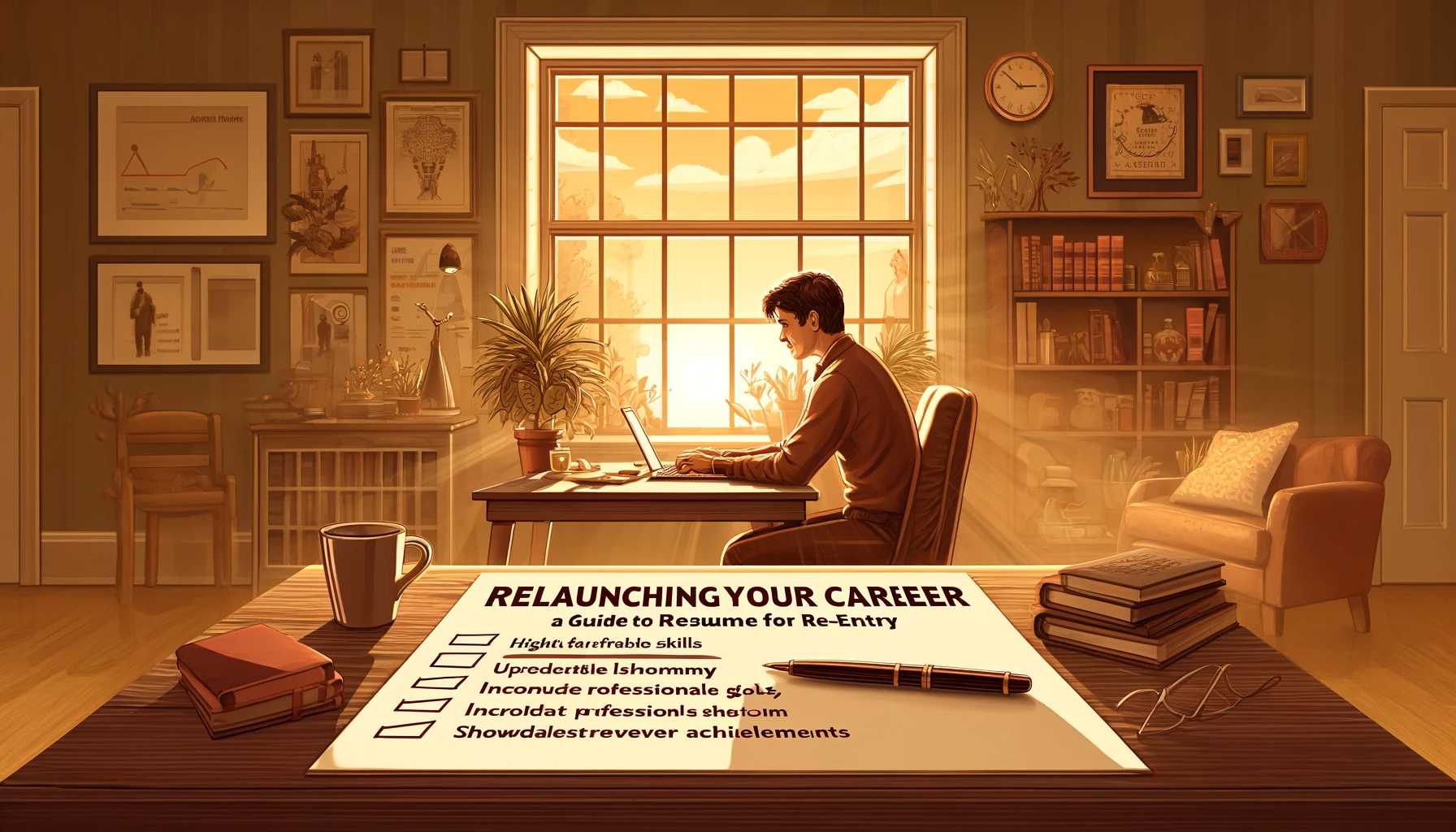Relaunching Your Career: A Guide to Resume Writing for Re-entry
The decision to re-enter the workforce after a career break can be both exciting and daunting. You bring a wealth of experience and transferable skills, but navigating the modern job market after a hiatus can feel unfamiliar. A key element in landing your dream role? A resume that effectively showcases your value despite the gap in traditional work experience.
This guide will equip you with the tools and strategies to craft a resume that gets you noticed by hiring managers. We'll delve into:
- Highlighting Your Strengths: Framing your career break as a positive and showcasing relevant skills.
- Crafting a Compelling Resume Structure: Choosing the right format and prioritizing content for impact.
- Addressing the Employment Gap: Acknowledging your absence gracefully without dwelling on it.
- Optimizing Your Resume for Applicant Tracking Systems (ATS): Tailoring keywords for a competitive edge.
- Showcasing Transferable Skills: Demonstrating how your non-work experiences translate into valuable assets.
- Reshaping Volunteer and Freelance Work: Presenting these experiences strategically to enhance your resume.
- Crafting a Powerful Summary Statement: Making a strong first impression with a concise overview.
Highlighting Your Strengths and Framing Your Break
Firstly, reframe your career break as a positive experience that equipped you with valuable skills. Did you raise a family? This demonstrates exceptional time management, organization, and problem-solving abilities. Did you volunteer or freelance? These experiences showcase initiative, adaptability, and commitment.
Crafting a Compelling Resume Structure
There are two main resume formats: chronological and functional. The chronological format lists your work experience in reverse chronological order, ideal if your past experience aligns well with your desired career path. The functional format emphasizes your skills over chronology, perfect if your experience comes from diverse sources or your career break was lengthy.
Addressing the Employment Gap
There's no need to shy away from your career break. A simple explanation within the dates of your employment is sufficient. For example, "2018-2022: Family Care Leave" or "2020-2023: Freelancing (Details in Skills Section)".
Optimizing for Applicant Tracking Systems (ATS)
Many companies utilize Applicant Tracking Systems (ATS) to filter resumes. Research the typical keywords used for your target positions and incorporate them throughout your resume. Don't overdo it, as keyword stuffing can flag your resume.
Showcasing Transferable Skills
Transferable skills are those applicable across various industries. Did you manage a team during your career break? Highlight your leadership, communication, and delegation skills. Project management, budgeting, negotiation, and problem-solving are other valuable transferable skills you may possess.
Reshaping Volunteer and Freelance Work
Volunteer and freelance work can be valuable assets. List them as separate sections on your resume, detailing the organizations, projects, and responsibilities you held. Quantify your achievements whenever possible. For example, "Increased volunteer organization's fundraising by 20%."
Crafting a Powerful Summary Statement
Think of your Summary Statement as your elevator pitch. In 2-3 sentences, showcase your career goals, most relevant skills, and achievements. This section grabs the employer's attention and positions you as an ideal candidate.
Additional Tips for Resume Writing Success
- Tailor your resume to each position you apply for. Highlight the skills and experiences most relevant to the specific job description.
- Proofread meticulously. Typos and grammatical errors can create a negative impression.
- Keep it concise and easy to read. A one-page resume is ideal for most applications.
- Consider using a professional resume template. These can provide a clean and well-structured format.
Beyond the Resume
Remember, your resume is just the first step. Prepare for interviews by researching the company and practicing your responses to common interview questions. Highlight your transferrable skills and enthusiasm for re-entering the workforce.
Conclusion:
Re-entering the workforce after a career break can be an enriching experience. By strategically crafting your resume and highlighting your unique value proposition, you can confidently embark on the next chapter of your professional journey. Remember, your career break has equipped you with valuable skills and experiences that make you a stronger candidate than ever before!
Bonus Tip: Take advantage of online resources and professional networks! Many websites offer free resume templates and writing guidance. Reconnect with former colleagues on LinkedIn to explore job opportunities and gain valuable industry insights.
This guide offers a roadmap for crafting a resume that empowers your re-entry into the workforce. With dedication and a strategic approach, you can successfully land your dream job and re-launch your career with confidence.









